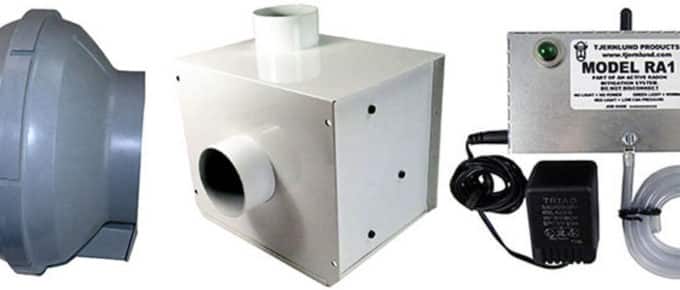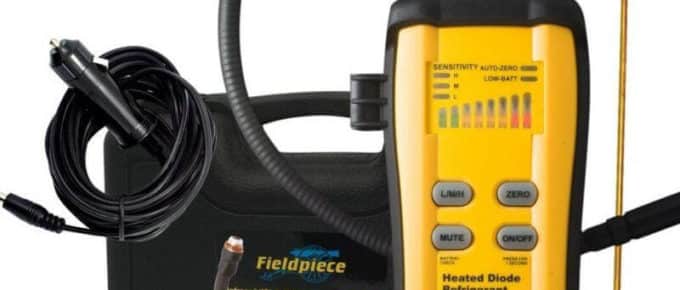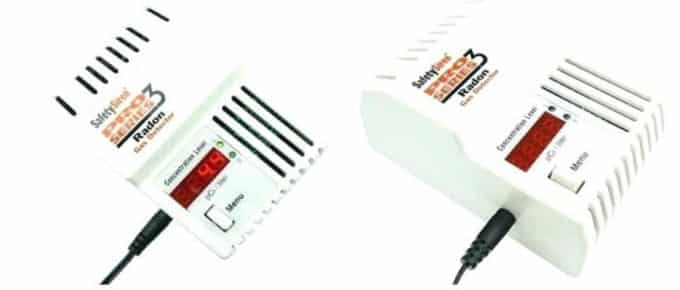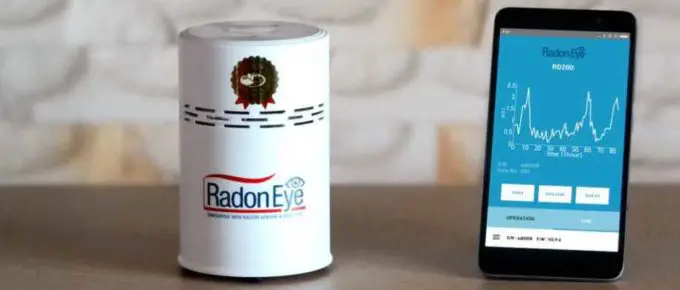You should test your home for the presence of radon gas. Radon is a radioactive noble gas. You should not belive in generalized myths about radon. Under normal conditions, it can be easily inhaled since it is colorless and odorless. The level of radon gas differs from location to location and seasons as well.
Radon may occur and mount up in buildings, especially areas at low levels like basements and ground spaces. It is also found in groundwater and also in some the hot springs. Radon is considered a major air pollutant that is affecting air quality worldwide.
According to studies, the United States (especially LOWA and APPALACHIAN MOUNTAIN AREAS) is the highest radon hazard and SOUTH KOREAN HOMES come 2 nd in the world. New homes in these areas have to pass radon-resistant construction requirements first.
And due to the colorless and odorless property of radon, it become a difficult task to detect it. Hence chemical tests are performed to determine its quantity in air and water. Efforts to reduce radon levels are called radon mitigation. In the United States, the Environmental Protection Agency acclaims all houses to be radon tested.
How Radon Gas Testing Is Done?
Radon testing can be of two types:
1. Short-term radon testing And
2. Long-term radon testing
1. Short-Term Radon Testing
There are many low costs DIY radon test kits available at public retail stores. Short-term testing using kit is the most common method. Since most of the houses require this testing compulsorily, hence they perform tests using these kits. Radon testing kits measure radon levels for a period of two to seven days.
This method is used for quicker results. Short term charcoal radon testing kit is the most common. It remains for 3-7 days. These testing kits use a vessel that contains a quantity of granular activated charcoal. The charcoal absorbs the radon gas entering the container from the surrounding air.
At the end of the radon gas test period, the container is sealed and sent to the laboratory in the pre-paid mailer for analysis. But these kits are not recommended for areas like bathrooms, and laundry rooms as they get affected by high humidity.
Points to be kept in mind during the test:
- Before beginning the test, ensure that all the doors and windows are closed 12 hours prior.
- During the test, try to keep the doors and windows closed as much as possible
- Avoid testing during windy and stormy days
- Keep the kit in the rooms that are used regularly (like living room, playrooms) and sleeping areas (bedroom, restroom)
- Keep the kit in low-level areas like the basement
- Avoid keeping the kit at areas with high humidity and high heat (like bathrooms, kitchens, laundry room)
- Avoid disturbance around the kit during the tests.
- Once the test ends, follow as instructed in the kit and send the test to the laboratory
A quick test followed by another test may help you to decide whether your house needs fixing or not. Environmental Protection Agency recommends fixing of the home if the radon levels are more than 4 pCi/L or higher.
2. Long-Term Radon Testing
Radon is entered in a building directly from the soil through the lowest levels, close to the ground. Increased radon levels in water may also affect radon present in the air.
Most common points in buildings from where radon enters are cracks in solid foundations, construction joints, cracks in walls, gaps in suspended floors, gaps around service pipes, cavities inside walls, and the water supply. Radon concentration may differ from time to time.
It may also differ from location to location. Thus, it is obvious that this gas is always is motion throughout the year and its concentration can never be the same at different times and locations. So, the results of the short-term testing kit cannot be considered in the final decision, as they are observations for three to seven days only.
Radon concentration keeps changing with time. It increases or decreases with the seasons and the surrounding conditions. Radon concentration is found to be higher during winters than in summers.
This is the reason why testing radon over time is obligatory. Such things are uncertain until its presence is being examined consistently.
According to the Environmental Protection Agency, radon levels must be checked in every two years. As radon concentration changes within days, it may even fluctuate within years. So, if we get regular testing of radon concentration, we will get informed of any changes in the radon present in the air.
Thus, long term radon testing is recommended. Long-term testing kits are even humidity and heat resistant so they don’t get affected by any such areas. Make sure to wear a temporary radon detector while performing the test.
How To Reduce Radon At Your Home?
Regular testing of your home is the only way to determine exposure to high levels of radon. Methods of testing have been already discussed above.
Follow the instructions of the kit and send it to the laboratory to get the results. If the radon concentrations are greater than mentioned above (>= 4 pic/L) then follow the guidelines below for radon reduction.
There are many methods for radon reduction. First, hire a contractor. They are professionals who will get a few tests done and based upon them they decide which is the best possible way to get radon concentrations reduced. Some techniques prevent radon entry in-home while others help in radon reduction.
Some of these techniques are:
- SOIL SUCTION: It prevents radon entry by drawing the radon from ground below the home to the air above the home. There it is attenuated.
- SEALING: Seals the cracks in the home, soil, and basement limits the flow of radon into your home.
- ROOM PRESSURIZATION: It creates enough pressure to keep radon out but it is not much effective.
- HEAT RECOVERY VENTILATION: A heat recovery ventilator is installed to increase ventilation. They are very effective when used for basements. They improve indoor air quality and reduce air pollutants.
FAQs
1.Does Radon Poisoning Causes Cancer?
Yes, it does. Radon decays itself and produces radioactive elements like radon daughters. They stick to surfaces such as dust particles in the air. Inhaling such contaminated for long time causes breathing issues followed by lung cancer as well in few cases.
Smoking is the leading cause of deaths due to lung cancer and radon poisoning comes 2 nd .So, smoking and high radon concentrations at your home may increase risks of lung cancer. Every year there are almost 21k death per year in the United States due to lung cancer caused due to exposure to radon.
2. What Are The Acceptable Concentration Of Radon?
A safe radon level depends upon an individual’s immune system. But still if we want to consider an acceptable range of radon, then according to EPA 1.3pic/L is the average safe radon level for a home.
EPA suggests that up to 2 pic/L is the safe radon level at home and no action needs to be taken. But higher concentrations than this may require some safety measures against this slow poison. 4 pic/L radon concentration is a matter of concern and immediate action is required.
3. Can Radon Tests Be Wrong?
Yes, it may be wrong. Radon is a gas and comes into home through the ground so its concentration may change day to day. So, short term testing may lead you to wrong conclusions at times.
4. How Much Does It Costs to Get Radon Testing?
Radon gas testing will typically cost between $200 and $300, depending on where you live.
5. How Often Radon Testing Must Be Done?
Long term radon testing, as recommended by EPA needs to be done in every two years.
6. How to Get Accurate Readings of Radon Test?
Perform test on each floor of your house, including basement. Avoid keeping the test kit near places with high temperatures and humidity. To avoid air movement, keep the windows and doors closed as much as possible during the test, as the concentrations may fluctuate. For better results ask professionals to get the test done (caution: it may cost too much).
7. What Is Radon Mitigation System?
Radon mitigation is a process of reduction of radon gas concentrations discovered in a particular building. Radon mitigation systems are usually installed to lower down the radon levels at home.
8. How Radon Mitigation System Works?
Radon mitigation systems have fans that pull Radon out of the foundation of home and disperse it at the top of the foundation, leading to dilution of gas and making air safer to breathe.
9. How Much Radon Mitigation Costs?
Radon mitigation system installation may cost you ranging from 750$ to 3000$. The total cost of system installation depends on the size of your home, type of system you have installed, radon concentration at your home.
10. How Does Radon Enters Your Home?
Radon can be found in some natural sources like particular rocks, soil and water (like hot springs). The risk of radon contamination through water is fairly low. But inhalation of contaminated air has high chances of radon exposure. Radon is entered in a building directly from the soil through the lowest levels, close to the ground. So, the easiest way of Radon to get into your home is to stick into air particles which can be easily inhaled.
11. Where Can I Get A Radon Test Kit?
Radon test kits can be bought from different sources. You may buy it online or at some public retail store. This may cost you around 25$ to 75$. Free radon test kits are also available sometimes from local or country health departments or from many ongoing radon programs.
12. What Are Signs of Radon?
Signs of radon exposure include regular cough and cold, difficulty in breathing, chest pains, blood gushing while coughing, panting. If you don’t consult a doctor soon, then it may get worse and lead to lung cancer.







Leave a Reply